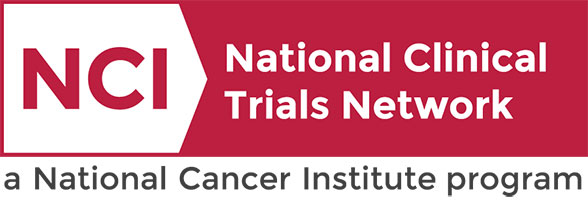Patient Search
 |
 |
|
KaCrole Higgins was diagnosed with breast cancer in 2020. “In May 2020, I found a lump in my breast. I cried. By June, it was diagnosed as breast cancer, triple positive, stage 1A. While getting this cancer diagnosis was devastating, it also became an opportunity. Suddenly, the cancer gave me clarity. It gave me clarity about what was important, what was good in my life, what was toxic in my life, and what I needed to do.” Click below to read more of KaCrole’s story |
If Landon Ryan had been diagnosed with bilateral retinoblastoma 10, 20 or 30 years ago, she might not be here today with nearly perfect vision.Thanks to recent improvements in the treatment for this rare form of cancer that almost exclusively affects children under the age of 5, the diagnosis had the power to change Landon’s life when she was 11 months old, but not to take it — or her eyesight. Click below to learn more about Landon and her story. https://momentum.vicc.org/2022/04/brighter-outlook/ |
A Study of Elacestrant Versus Standard Endocrine Therapy in Women and Men With ER+,HER2-, Early Breast Cancer With High Risk of Recurrence
Breast
Breast
The primary goal of this study is to evaluate the effectiveness of elacestrant versus standard endocrine therapy in participants with node-positive, Estrogen Receptor-positive (ER+), Human Epidermal Growth Factor-2 negative (HER2-) early breast cancer with high risk of recurrence.
Breast
III
Abramson, Vandana
NCT06492616
VICC-DTBRE24171
Pembrolizumab vs. Observation in People With Triple-negative Breast Cancer Who Had a Pathologic Complete Response After Chemotherapy Plus Pembrolizumab
Breast
Breast
The phase III trial compares the effect of pembrolizumab to observation for the treatment of patients with early-stage triple-negative breast cancer who achieved a pathologic complete response after preoperative chemotherapy in combination with pembrolizumab. Immunotherapy with monoclonal antibodies, such as pembrolizumab, may help the body's immune system attack the cancer, and may interfere with the ability of tumor cells to grow and spread. This trial may help researchers determine if observation will result in the same risk of cancer coming back as pembrolizumab after surgery in triple-negative breast cancer patients who achieve pathologic complete response after preoperative chemotherapy with pembrolizumab.
Breast
III
Abramson, Vandana
NCT05812807
VICC-NTBRE23357
A Study of Elritercept to Treat Anemia in Adults With Very Low, Low, or Intermediate Risk Myelodysplastic Syndromes (MDS) Who Need Regular Blood Transfusions
Myelodysplastic Syndrome
Myelodysplastic Syndrome
The main aim of this study is to find out how well elritercept works in lowering the need for RBC transfusions. Other aims are to learn how well elritercept works in reducing the need for RBC transfusions over longer periods of time or in adults with high transfusion needs. The study will also check on how safe elritercept is and how well it is tolerated.
Myelodysplastic Syndrome
III
Kishtagari, Ashwin
NCT06499285
VICCHEM24599
An Adjuvant Endocrine-based Therapy Study of Camizestrant (AZD9833) in ER+/HER2- Early Breast Cancer (CAMBRIA-2)
This is a Phase III open-label study to assess if camizestrant improves outcomes compared to standard adjuvant endocrine therapy for patients with ER+/HER2- early breast cancer with intermediate-high or high risk for disease recurrence who completed definitive locoregional therapy (with or without chemotherapy). The planned duration of treatment in either arm within the study will be 7 years.
Not Available
III
Not Available
NCT05952557
VICC-DTBRE23083
ResQ201A: Clinical Trial Of N-803 Plus TISLELIZUMAB And DOCETAXEL Versus DOCETAXEL Monotherapy In Participants With Advanced Or Metastatic Non-Small Cell Lung Cancer
Lung
Lung
This is a randomized, open-label, phase 3 clinical trial to compare the efficacy and safety of N-803 plus tislelizumab and docetaxel (experimental arm) versus docetaxel monotherapy (control arm). Enrolled participants will be randomized 2:1 to treatment in the experimental arm or the control arm. Participant randomization will be stratified by geographical region (North America vs Europe vs ASIA vs Other), NSCLC histology (squamous vs nonsquamous), and actionable genomic alteration (AGA); (epidermal growth factor receptor \[EGFR\]/anaplastic lymphoma kinase \[ALK\] vs OTHER AGA vs No AGA).
Lung
III
Wang, Shuai
NCT06745908
VICCTHO24569
Neoadjuvant Chemotherapy, Excision And Observation vs Chemoradiotherapy For Rectal Cancer
This study is being done to answer the following questions: Is the chance of rectal cancer responding the same if chemotherapy alone is given before limited surgery compared to chemotherapy and radiation therapy given together before limited surgery? If radiation therapy is not given, is quality of life better?
Not Available
III
Eng, Cathy
NCT06205485
SWOGGICO32
Study of Sotorasib, Panitumumab and FOLFIRI Versus FOLFIRI With or Without Bevacizumab-awwb in Treatment-nave Participants With Metastatic Colorectal Cancer With KRAS p.G12C Mutation
The aim of this study is to compare progression free survival (PFS) in treatment-nave participants with KRAS p.G12C mutated metastatic colorectal cancer (mCRC) receiving sotorasib, panitumumab and FOLFIRI vs FOLFIRI with or without bevacizumab-awwb.
Not Available
III
Eng, Cathy
NCT06252649
VICC-DTGIT23266
A Randomized Phase III Study of Systemic Therapy with or without Hepatic Arterial Infusion for Unresectable Colorectal Liver Metastases: The PUMP Trial
Not Available
III
Padmanabhan, Sekhar
NCT05863195
VICC-NTGIT23530
Surgery With or Without Neoadjuvant Chemotherapy in High Risk RetroPeritoneal Sarcoma
Sarcoma
Sarcoma
This is a multicenter, randomized, open label phase lll trial to assess whether preoperative chemotherapy, as an adjunct to curative-intent surgery, improves the prognosis of high risk DDLPS (dedifferentiated Liposarcoma) and LMS (Leiomyosarcoma) patients as measured by disease free survival.
After confirmation of eligibility criteria, patients will be randomized to either the standard arm or experimental arm.
After confirmation of eligibility criteria, patients will be randomized to either the standard arm or experimental arm.
Sarcoma
III
Davis, Elizabeth
NCT04031677
ECOGSAREA7211
Randomized Phase III Trial of Neoadjuvant Immunotherapy with Response-Adapted Treatment versus Standard-of-Care Treatment for Resectable Stage III/IV Cutaneous Squamous Cell Carcinoma
Head/Neck
Head/Neck
Head/Neck
III
Choe, Jennifer
NCT06568172
NRGHNHN014


